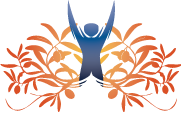At Mount Regis Center, we offer an intensive, evidence based approach to co-occurring heroin and addiction treatment. Our therapeutic interventions help our clients build a strong foundation for long-term recovery.
Understanding Heroin
Learn about heroin
Heroin is an illegal, highly addictive drug which is both the most abused and the fastest acting of the opiates, a class of drugs which produces a sense of euphoria combined with a feeling of relaxation. It is a derivative of morphine, an opiate produced from certain types of poppies. While it is possible to buy pure heroin, much of what is sold on the streets is cut with another substance either to increase the profit margin or to produce a different and more potent high. Some may be cut with inert substances such as starch, baby powder or powdered milk, however, it may also be cut with strychnine, quinine or other poisons. Given there’s no way to always be certain what could be mixed in with any heroine purchased, the risk of overdose or death from poisoning is not insignificant. Additionally, given the high prevalence of shared needles in individuals who use heroin there is also a major risk of transmitting HIV, Hepatitis, or other diseases.
Statistics
Heroin statistics
Estimates suggest at least 3.7 million people have used heroin in their lifetime. Given heroin is an illegal substance and many users are incarcerated, it is believed this is an underestimate. The highest rates of use were found in individuals age 26 or older. However, prevalence studies showed at least 75% of new users were 18 or older. The male to female ratio for heroin use was estimated as 3 to 1.
Causes and Risk Factors
Causes and risk factors for heroin
Genetics and Family Factors: Substance abuse runs in families and those with a first degree relative with an opioid addiction is more likely to develop a similar addiction. In addition, if there is overt heroin use in the family, the stigma against using this drug is minimized. Children growing up in such families learn when confronted with stress or difficulties, heroin can make things easier.
Brain Chemistry and Structures: After a period of time of heroin use an individual’s brain begins to recognize it as one of the natural chemicals to which it is similar. This natural chemical helps produce sensations of pleasure and when heroin begins to replace it, the brain stops producing its own chemicals. When the individual attempts to cut down, the brain does not immediately begin producing this chemical and the individual experiences a huge dip in pleasure. This reinforces use of the drug to avoid this depressed mood. In addition, heroin use causes changes in brain structures which lead to increasing cravings for the drug resulting to regular increases in the amount used not just as a result from tolerance but from brain produced cravings as well.
Biological/Environmental Interactions: It has been estimated 50% of an individual’s vulnerability to develop a heroin use disorder is accounted for by the interaction between biological and environmental interactions.
Physical Factors: People who use heroin often begin by first being legally prescribed opiates for post-surgical pain or other legitimate purposes. They may first have developed addictions to this opiate and as tolerance built and the need surpassed the amount the physician was willing to prescribe they may have gone to multiple doctors. However, as pharmacists’ data bases are linked, when they attempted to fill multiple prescriptions at different pharmacists, they were caught and refused prescriptions. This can leave an addicted individual suddenly cut off from their drug of choice. Fearing withdrawal, they may look for the quickest way to replace this drug. Heroin is readily available, cheap and produces a more potent high than the legal opiates. Although perhaps the person intended to use heroin just to fill the gaps between when they can get other opiate prescriptions, the increased potency causes them to fully substitute heroin for other opiates.
Signs and Symptoms
Signs and symptoms of heroin
Mood/Psychological symptoms:
- Changes in personality
- Disorientation
- Unclear thoughts
- Euphoria
- Memory loss
- Decision making is compromised
- Emotional numbing or inability to experience positive or negative emotion
- Depression
- Anxiety
Behavioral symptoms:
- Altered ways of behaving that seem out of the norm for the individual
- Self-control deteriorates
- Drug seeking behavior takes up much of the individuals time
- Increased secrecy
- Aggression
- Failure to fulfill major life responsibilities
- Inability to be productive at work or school
- The individual continues to use the drug despite negative consequences including incarceration
- Lying
- Obtaining the drug through any means possible including stealing
- Continued use despite knowledge of increasing danger and refusal to put protective measures in place
- Hiding the drug in a number of places in case some is confiscated
Physical symptoms:
- Difficulty catching breath
- Dry mouth
- Small pupils
- Disorientation
- Alternating between seeming highly alert and tired to the point of falling asleep
- Appearing exhausted as if they can barely hold themselves up
- Itching
- Nausea
- Vomiting
- Weight loss
- Slurred speech
- Track marks on extremities
- Malnutrition
- Runny nose
- Scabs resulting from skin picking due to the sensation of bugs crawling beneath the skin
Effects
Effects of heroin
- Hypotension or Hypertension
- Mild to severe headaches
- Faintness
- Lack of hunger
- Decreased respiration
- Trouble swallowing
- Circulation problems
- Death
- Queasiness
- Sleep apnea
- Joint aches
- Touchiness
- Depression
- Anxiety
- Disorganized thoughts
- Clumsiness
- Suicidal Thoughts and Feelings
- Inability to inhibit negative behavior
- Dealing the drug to finance the habit
- Trouble with the law and incarceration
Co-Occurring Disorders
Heroin and co-occurring disorders
When someone who is addicted to heroin stops taking it, they frequently develop negative symptoms which can be serious without treatment. These include:
- Severe negative mood
- Muscle aches
- Body pain
- Nausea and vomiting
- Intense sweating
- Chills
- Dangerously irregular heartbeat
- Stroke
- Respiratory distress
- Insomnia
- Intense cravings
- Seizures
- Shock









